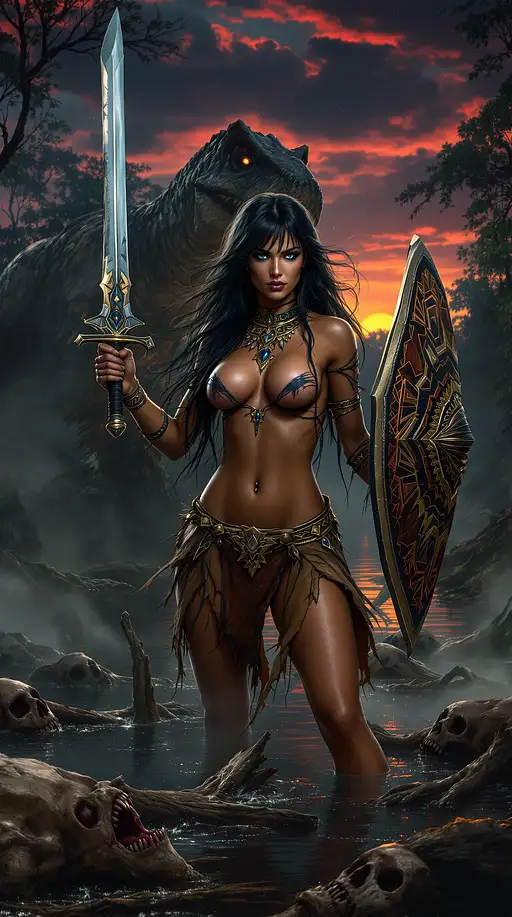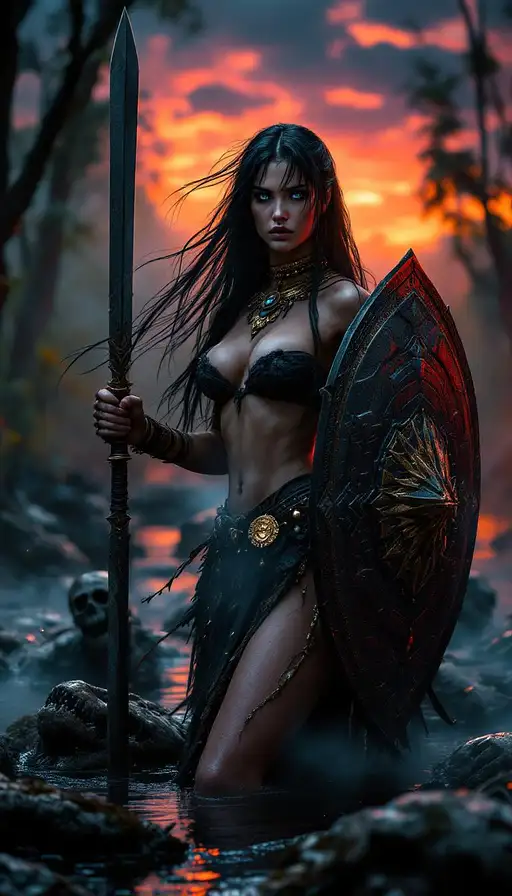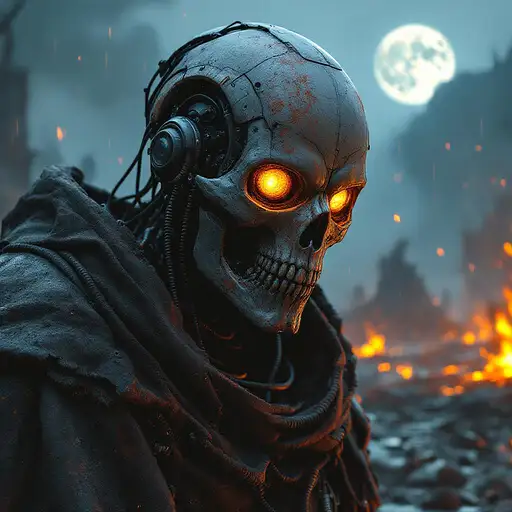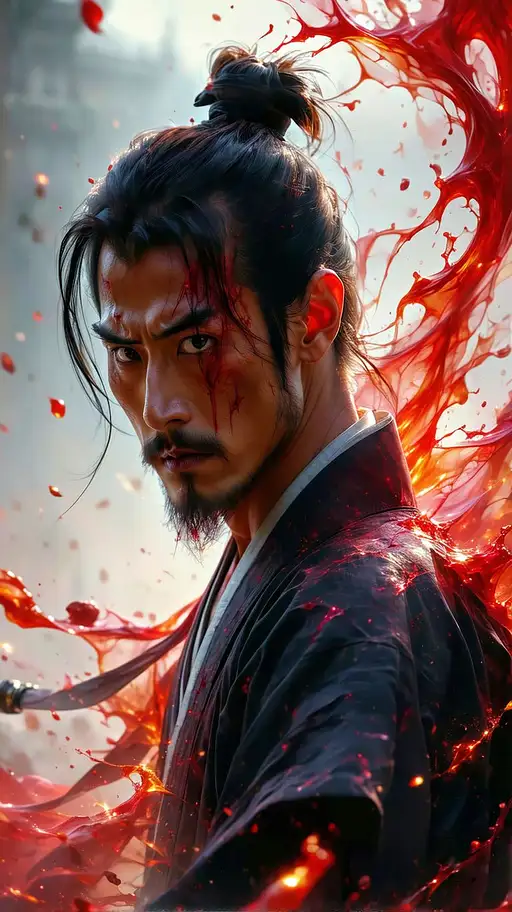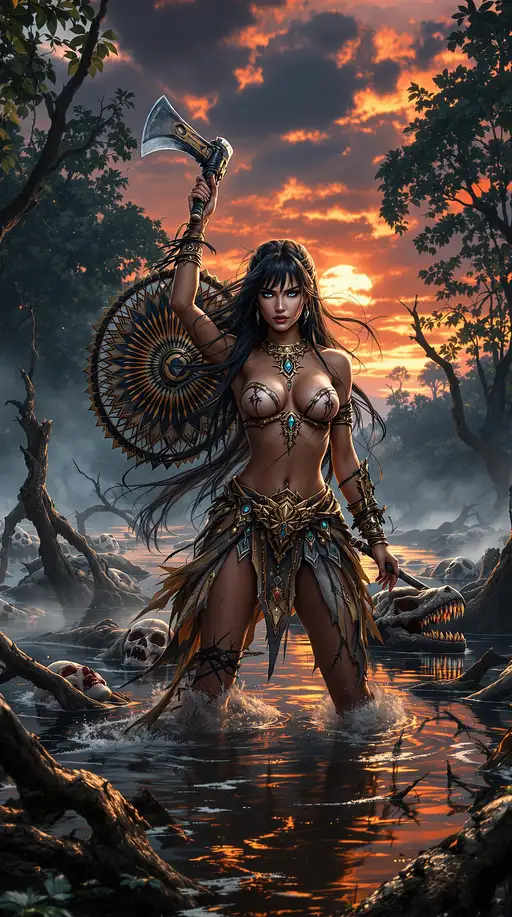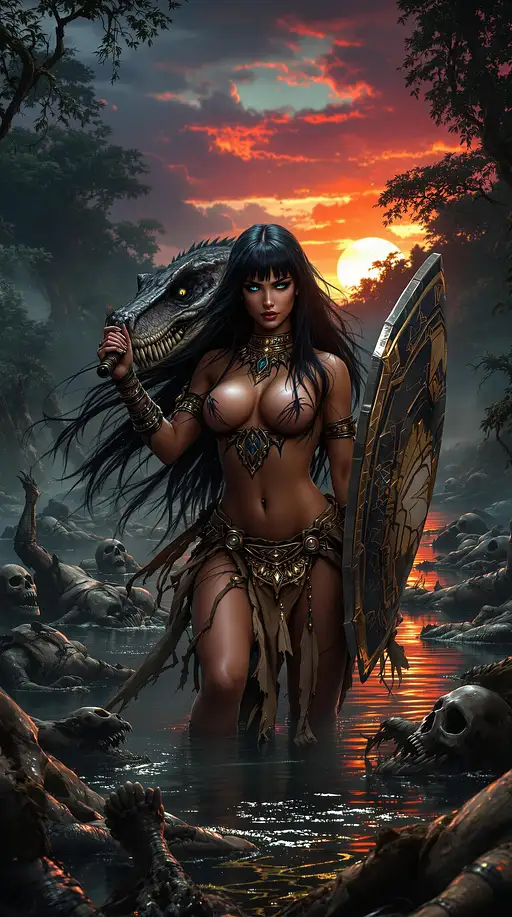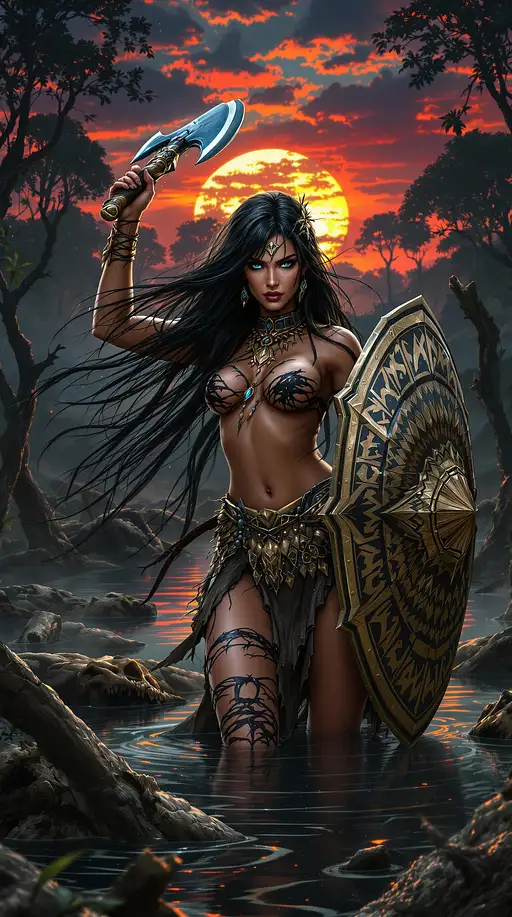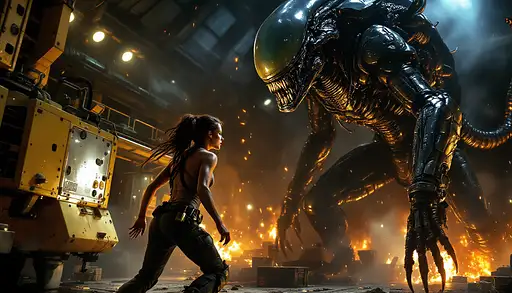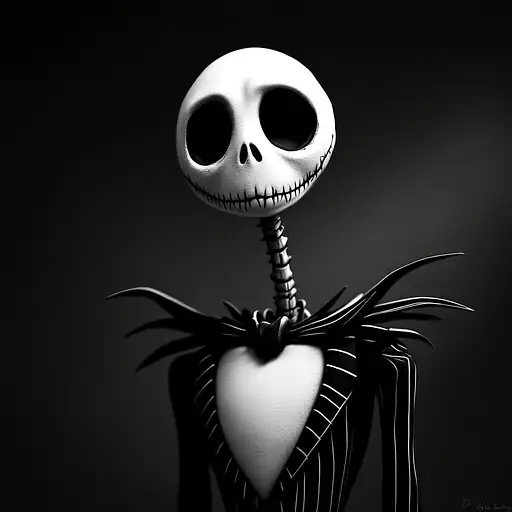
9 months ago
A serene yet intense scene in a dense, ancient forest during the stillness of twilight. A woma, one of her breasts are showing, dressed in traditional Edo-period attire stands prominently in the frame, her upper body filling much of the composition. Her revealing garment, a loosely draped kimono, slips off one shoulder, fully exposing one breast, naturally presented in the scene. The fabric of her kimono, patterned with delicate floral designs, flows gently in the breeze, its vibrant reds and deep blues contrasting with the muted greens and browns of the forest. She holds a traditional Edo-period katana, its single, elegant hilt tightly wrapped in black silk, close to her face with both hands. The katana is proportioned perfectly, its slightly curved blade sharp and gleaming, reflecting the faint light of the crescent moon filtering through the towering trees. The polished steel captures the intricate patterns of folded metal, a hallmark of masterful Edo-period craftsmanship. The tsuka (handle) is a balanced, functional length, designed for precision, while the blade remains practical and deadly, fitting the refined nature of the scene. The faint reflection of a shadowy demon lingers in the blade, its ominous presence hinting at the unseen threat in the forest. Her expression is calm yet resolute, her eyes closed as though in prayer or deep contemplation, her soft features lit faintly by streaks of moonlight piercing through the canopy. Her hair, slightly disheveled, falls loosely around her shoulders, adorned with a simple hairpin, adding a touch of elegance. The breeze stirs her hair and the folds of her kimono, creating a sense of motion against the tranquil backdrop. Around her, autumn leaves fall gracefully, their vibrant reds and oranges contrasting with the muted greens and browns of the forest. Some leaves drift close to the viewer, framing her within the layered composition of the forest. The forest floor, moss-covered and bathed in soft moonlight, adds texture and grounding to the scene. The interplay of light and shadow creates long, dramatic highlights across her form and the intricate folds of her clothing. The katana’s blade glimmers, reflecting both the faint moonlight and the ominous shadow of the demon, as though the weapon itself is warning of the danger to come. The atmosphere is thick with tension, as though the forest itself holds its breath. The dynamic interplay of falling leaves, light and shadow, and the woman’s serene pose creates a cinematic and deeply emotional moment. The balance of elegance and quiet intensity evokes a timeless connection to the strength and grace of Edo-period Japan.



